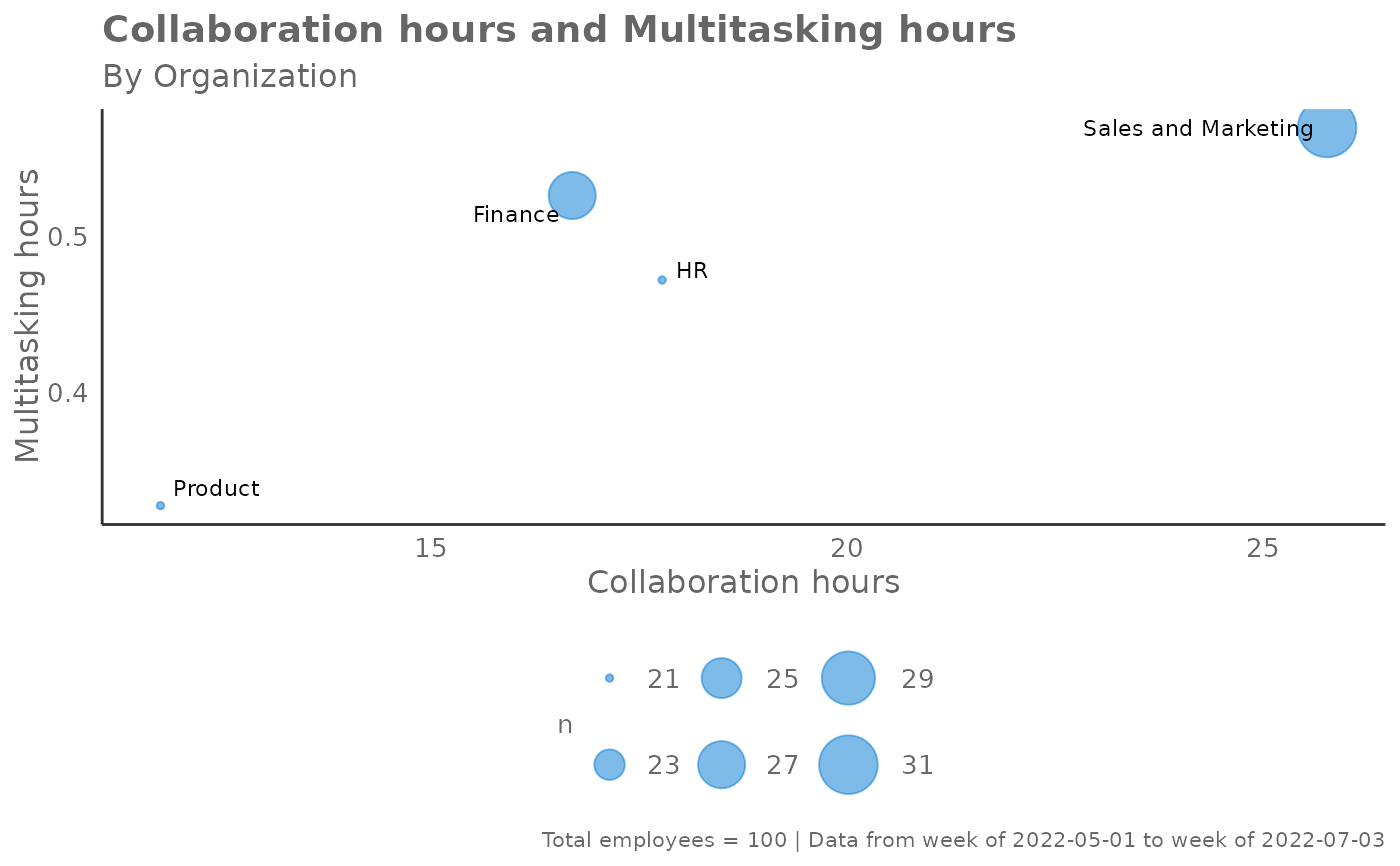
Create a bubble plot with two selected Viva Insights metrics (General Purpose), with size representing the number of employees in the group.
Source:R/create_bubble.R
create_bubble.RdReturns a bubble plot of two selected metrics, using size to map the number of employees.
Usage
create_bubble(
data,
metric_x,
metric_y,
hrvar = "Organization",
mingroup = 5,
return = "plot",
bubble_size = c(1, 10)
)Arguments
- data
A Standard Person Query dataset in the form of a data frame.
- metric_x
Character string containing the name of the metric, e.g. "Collaboration_hours"
- metric_y
Character string containing the name of the metric, e.g. "Collaboration_hours"
- hrvar
HR Variable by which to split metrics, defaults to "Organization" but accepts any character vector, e.g. "LevelDesignation"
- mingroup
Numeric value setting the privacy threshold / minimum group size. Defaults to 5.
- return
String specifying what to return. This must be one of the following strings: -
"plot"-"table"- bubble_size
A numeric vector of length two to specify the size range of the bubbles
Value
A different output is returned depending on the value passed to the
return argument:
"plot": 'ggplot' object. A bubble plot for the metric."table": data frame. A summary table for the metric.
Details
This is a general purpose function that powers all the functions in the package that produce bubble plots.
See also
Other Visualization:
afterhours_dist(),
afterhours_fizz(),
afterhours_line(),
afterhours_rank(),
afterhours_summary(),
afterhours_trend(),
collaboration_area(),
collaboration_dist(),
collaboration_fizz(),
collaboration_line(),
collaboration_rank(),
collaboration_sum(),
collaboration_trend(),
create_bar(),
create_bar_asis(),
create_boxplot(),
create_dist(),
create_fizz(),
create_inc(),
create_line(),
create_line_asis(),
create_period_scatter(),
create_rank(),
create_rogers(),
create_sankey(),
create_scatter(),
create_stacked(),
create_tracking(),
create_trend(),
email_dist(),
email_fizz(),
email_line(),
email_rank(),
email_summary(),
email_trend(),
external_dist(),
external_fizz(),
external_line(),
external_rank(),
external_sum(),
hr_trend(),
hrvar_count(),
hrvar_trend(),
keymetrics_scan(),
meeting_dist(),
meeting_fizz(),
meeting_line(),
meeting_rank(),
meeting_summary(),
meeting_trend(),
one2one_dist(),
one2one_fizz(),
one2one_freq(),
one2one_line(),
one2one_rank(),
one2one_sum(),
one2one_trend()
Other Flexible:
create_bar(),
create_bar_asis(),
create_boxplot(),
create_density(),
create_dist(),
create_fizz(),
create_hist(),
create_inc(),
create_line(),
create_line_asis(),
create_period_scatter(),
create_rank(),
create_sankey(),
create_scatter(),
create_stacked(),
create_tracking(),
create_trend()
